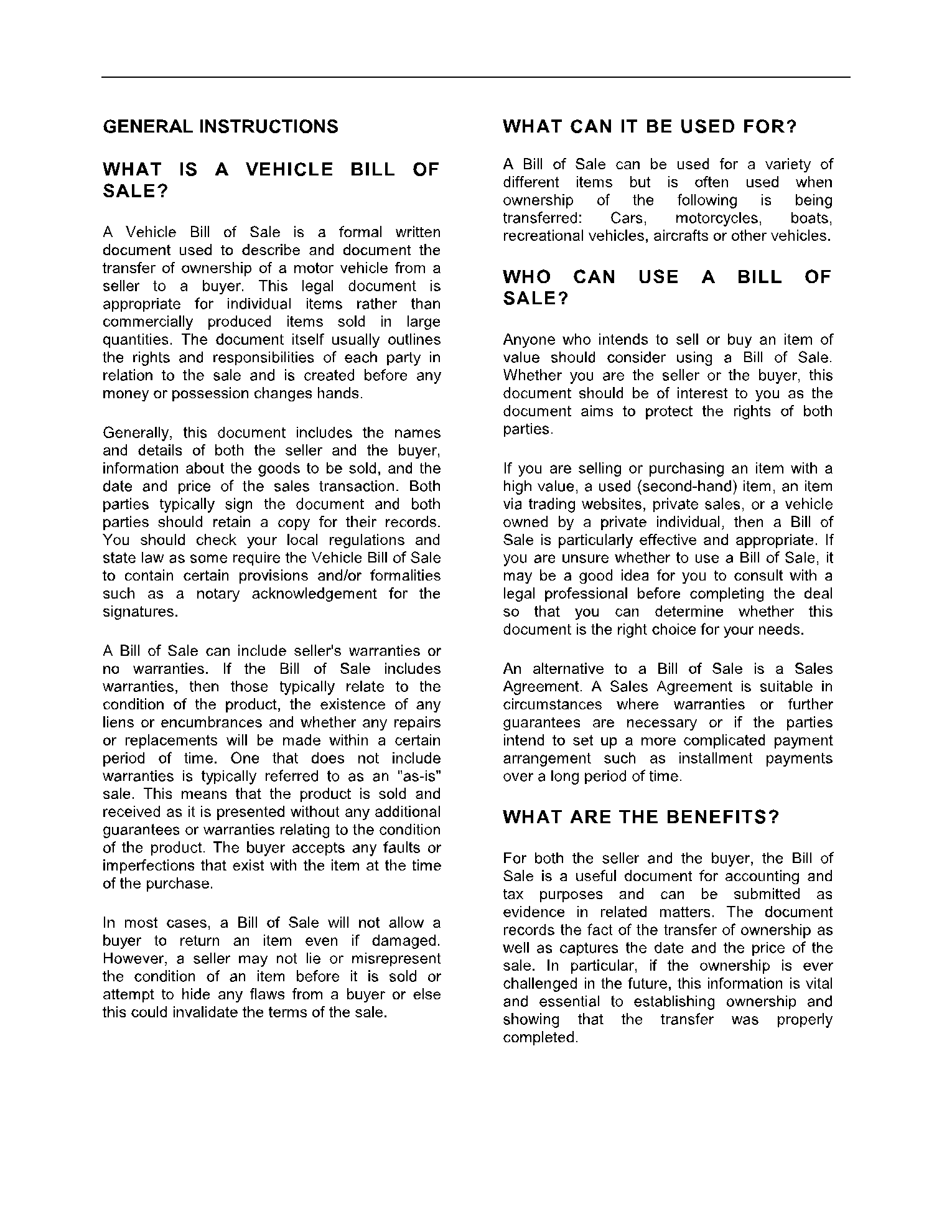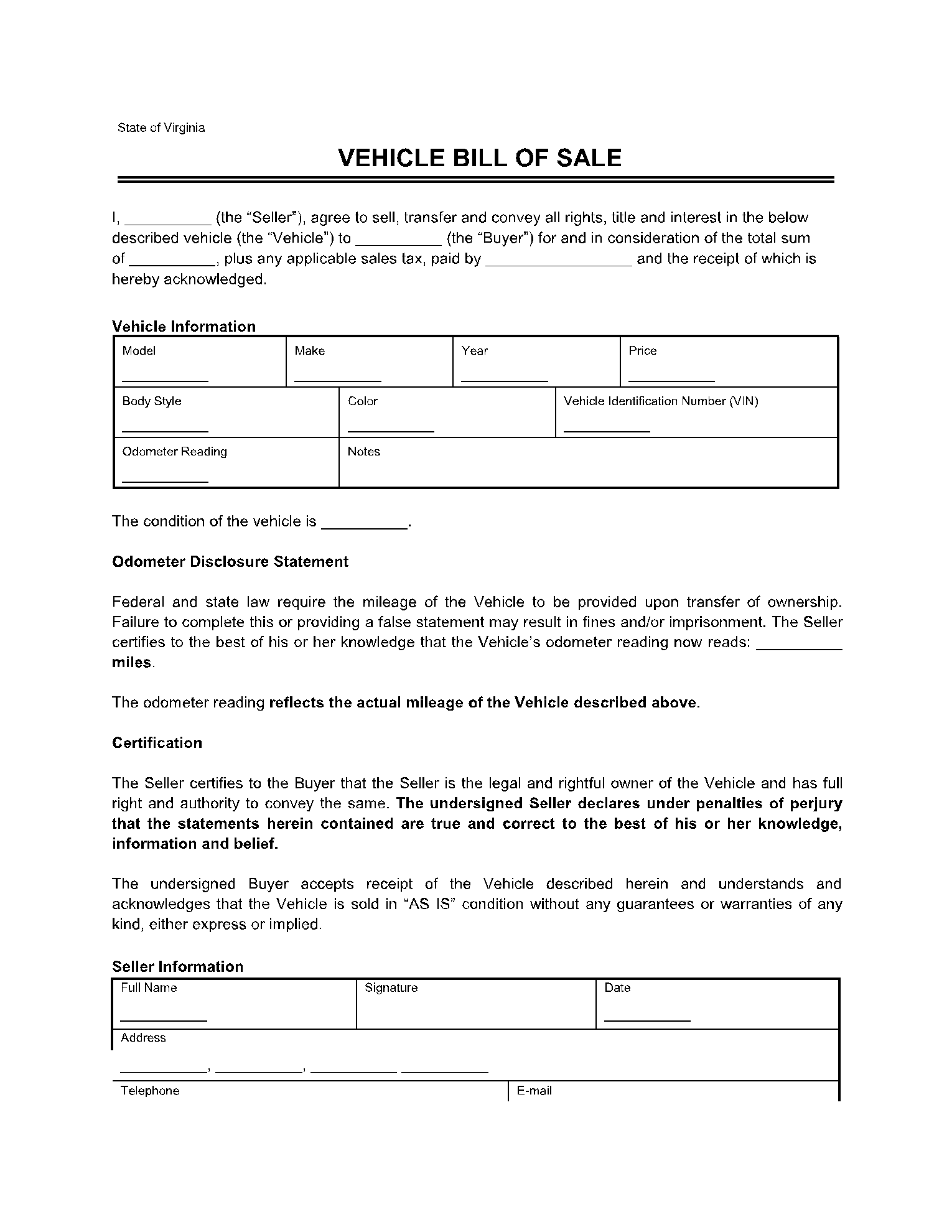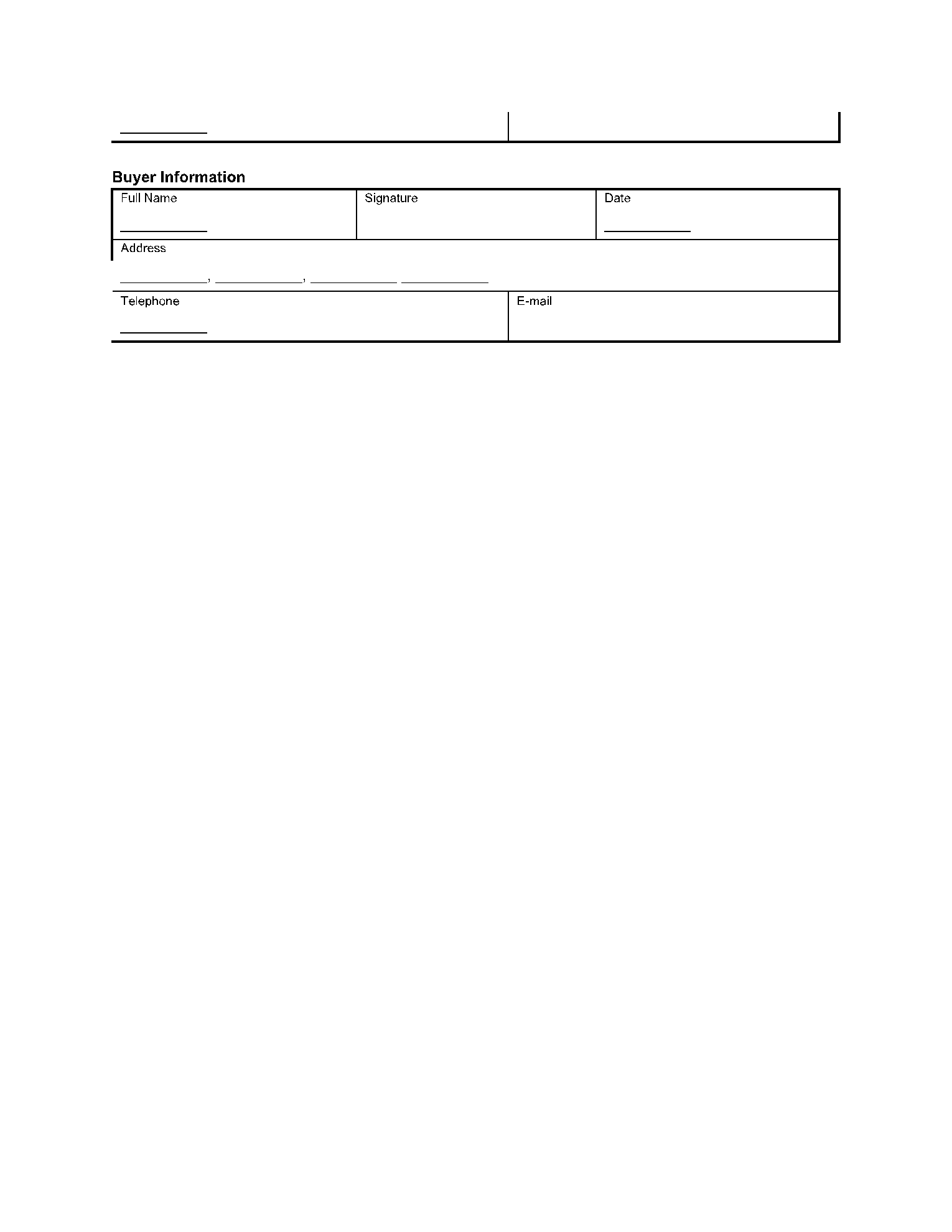The Virginia vehicle bill of sale is a legal document that is physical and legal evidence of the selling of a motor vehicle between two parties. A buyer does not possess the rights of a motor vehicle in Virginia until an individual submits a Virginia Vehicle Bill of Sale.
The federal law requires that the Odometer Disclosure Statement (VSA-5) be added to the Virginia vehicle bill of sale. In addition, if the vehicle is older than five years, it also requires the 'Vehicles Over 5 Years Old' form.
How to Register a Vehicle in Virginia?
The first step after purchasing a vehicle is to acquire the title and register the bought vehicle from the Virginia Department of Motor Vehicles (DMV) Offices. This gets the buyer the permission to drive the vehicle on the roads.
The following documents are required for registering a vehicle:
- A title signed over to the buyer.
- A legal bill of sale.
- Photo ID.
- Evidence of buyer’s residency that is the same as the residential address on the ID.
- An insurance proof.
- Certificate of Inspection.
- The fee of registration and titling.
What Is Included In a Virginia Vehicle Bill of Sale?
When Virginia Vehicle Bill of Sale is being compiled, the following components shall be included:
Information of Parties
- Full Name
- Complete Physical Address
- Driver’s License Number
- City
- State
Information of Vehicle
- Make
- Model of the Vehicle
- Year
- The Vehicle Identification Number (VIN)
- Vehicle’s Colour
- Odometer’s Reading (in miles)
- The title in the sale with a yes or no option
Information about Payment
Include the trade/purchase price and check for the boxes to tick according to your situation. Following guidelines can be followed:
- The first box is checked means that the payment will only be done in dollars so just write the amount in words.
- Now write the amount in dollars.
- Specify the date of agreement in the format MM/DD/YYYY.
- Mention any miscellaneous condition that was agreed upon by both parties and describe them in a few words.
- Do not forget to check for the box where it says that the vehicle is being gifted to the other person.
- The conclusive part focuses on the direct-trade. Explain the trade agreement.
Mention Defects in the Vehicle
In this part, the seller is required to reveal any kind of defect to the vehicles and provide a signature.
Add Signatures
The official signatures are required i.e.:
- The seller’s signature and printed name.
- The buyer’s signature and printed name.
- The witness signature and printed name.
Notarize the Vehicle Bill of Sale
- Notarization of the legal document is done and affixation of the state seal is done.
- Printed copies are distributed among both parties and original is kept by the buyer.
How to Sell a Vehicle in Virginia?
Here’s how to sell a motor vehicle in Virginia:
Step 1: Wash, clean, repair, and advertise your car properly.
Step 2: Arrange a face to face meeting with your buyer and discuss all the stipulations of sale.
Step 3: Acquire and fill the Virginia Vehicle Bill of Sale out and provide all the documents related to the vehicle to your buyer.
Step 4: Take the license plates off your vehicle and cancel any ongoing insurance.
The buyer might need the following additional items:
- In the case of buying a vehicle from a dealer, the buyer will need to present the documents including Bill of Sale Application MVR-1, Odometer Disclosure Statement MVR-180, and Damage Disclosure Statement MVR-181.
- In the case of receiving the vehicle as a gift or donation, an additional lien release document is required.
- Transferring of Vehicle between family requires Highway-Use Tax Exemption Certificate MVR-613.
- The document of ‘Cancellation of Mobile Home Titles’ MVR-46G is required only if the title is being declared as real estate when you buy a mobile home.
Conclusion
The Virginia vehicle bill of sale is required to legally obtain the permission of transferring or receiving the rights of a motor vehicle. Cocosign offers some of the best bills of sale templates to assist the process of selling and buying any vehicle.



